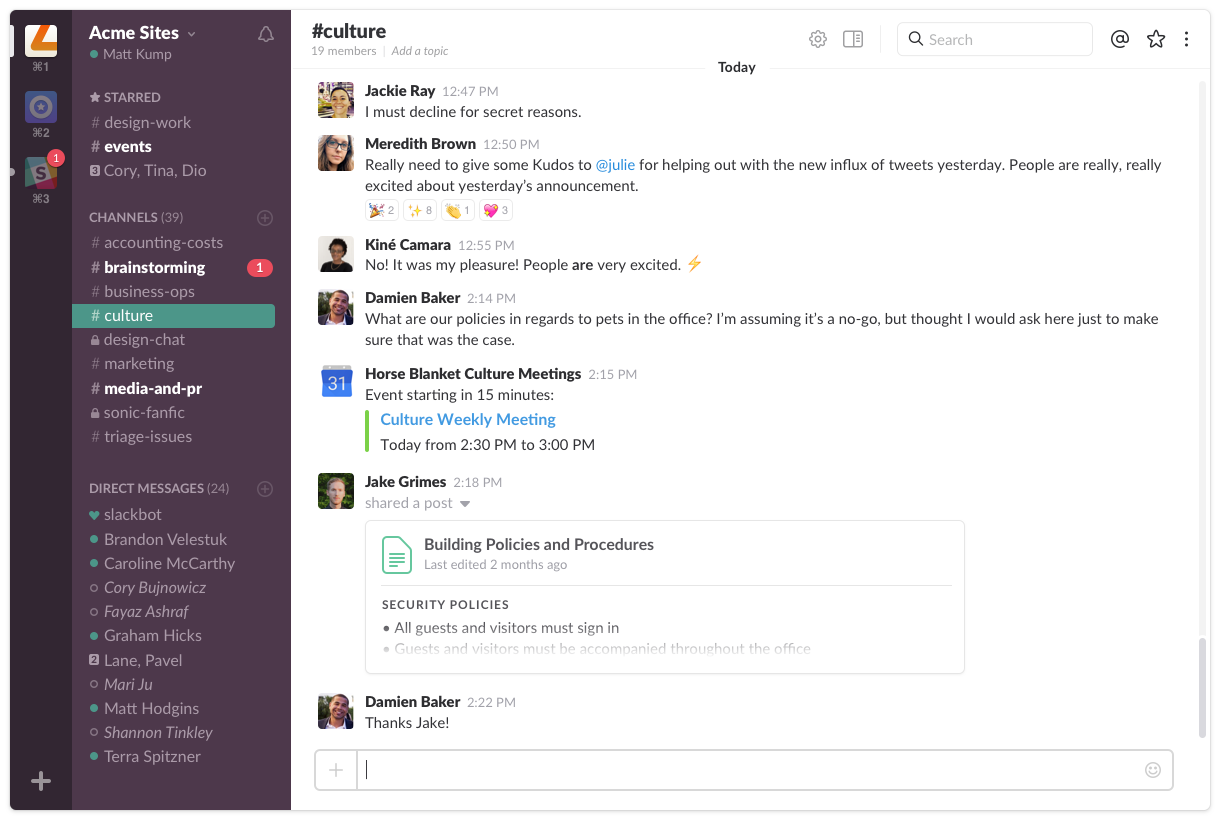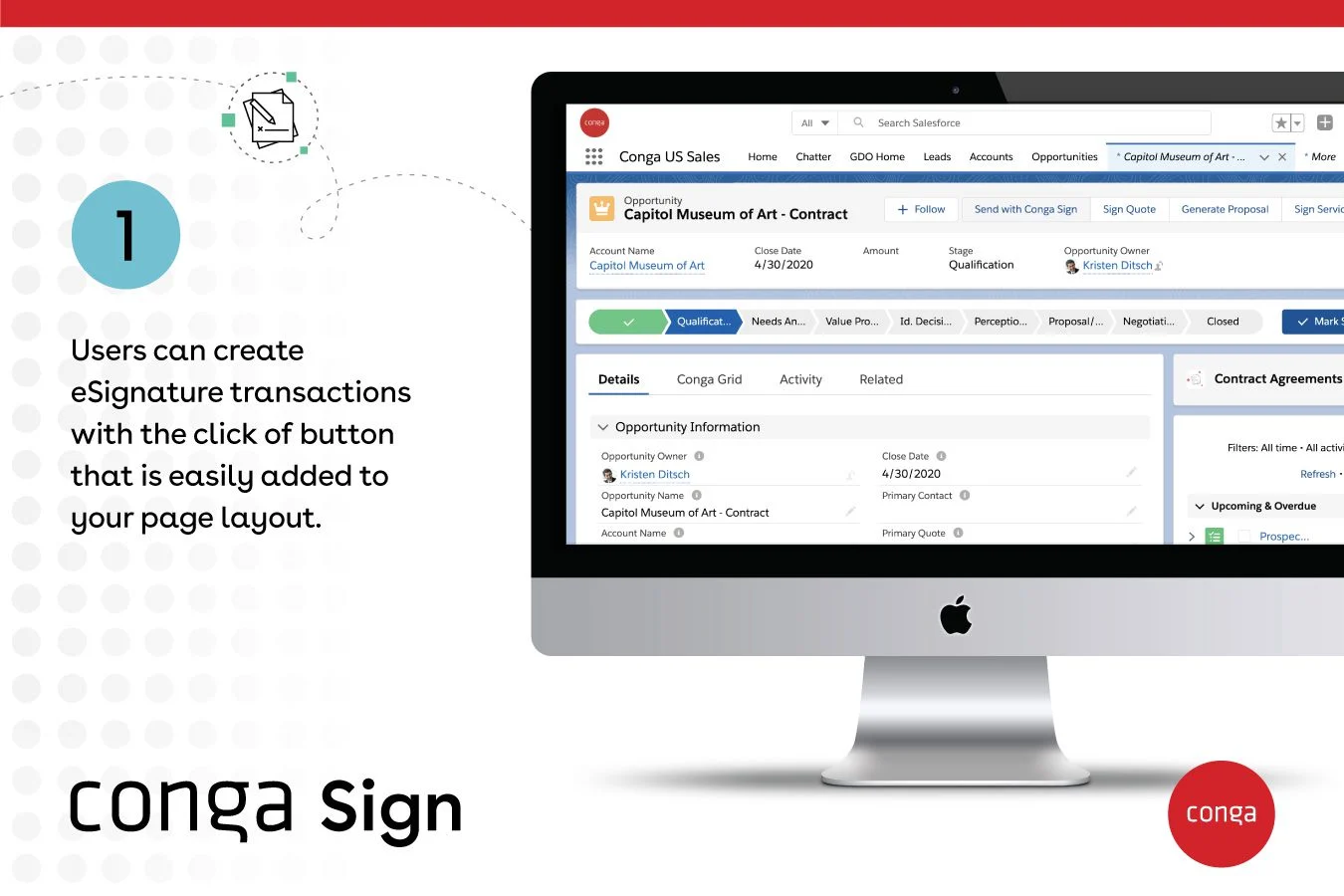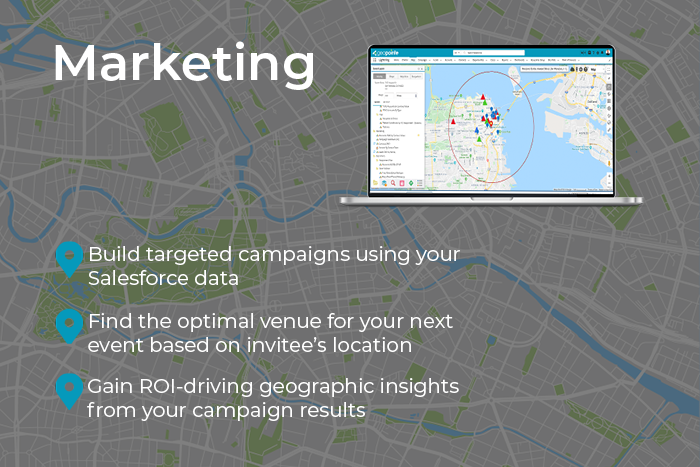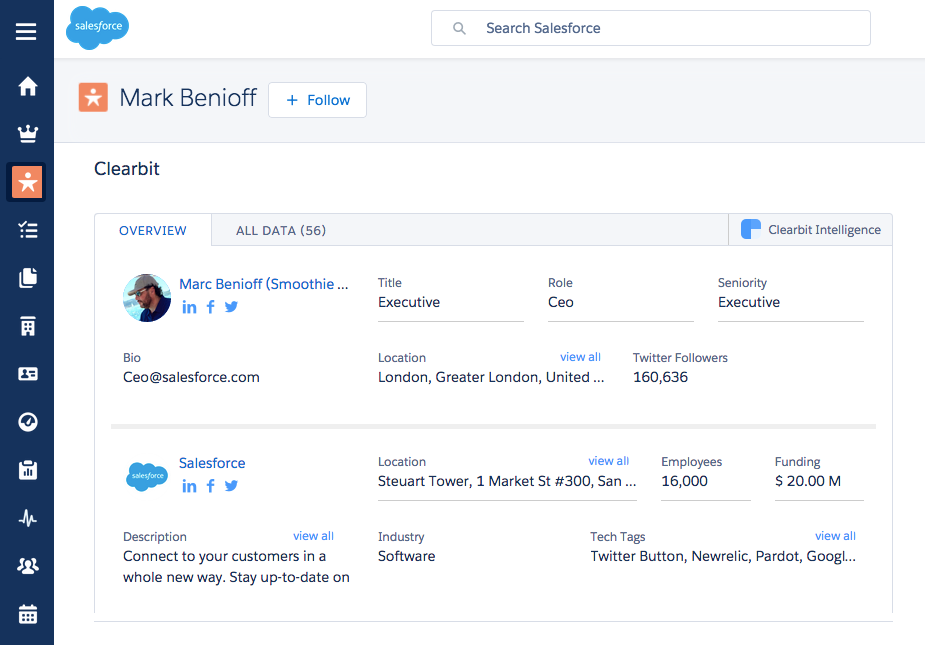10 Best Salesforce Apps for Professionals in 2025
Choosing the right Salesforce integration can transform your business operations, a key goal for many companies, with a 2024 Deloitte survey finding that 18% of US leaders use digital transformation to radically change their business. But with thousands of options on AppExchange, the selection process feels overwhelming.
This guide covers the 10 best Salesforce apps for business professionals in 2025. We'll break down their key features, use cases, and benefits so you can make an informed decision that enhances your workflows.
What are Salesforce integrations?
Salesforce integrations are connections that allow your Salesforce CRM to share data and work seamlessly with other business applications. These integrations eliminate manual data entry and app switching by creating automated workflows between your tools, and research shows the impact: over 90% of workers report that automation solutions have increased their productivity.
Key benefits include:
Unified workflow: Information flows automatically between systems
Reduced context switching: Work within familiar tools without jumping between apps
Extended functionality: Add capabilities like marketing automation, project management, and payment processing
Best Salesforce apps by use case
While Salesforce excels as a CRM, integrations unlock its full potential by connecting your entire tech stack.
Here are the 10 best Salesforce apps of 2025, organized by use case:
Guru – Best for AI-based knowledge management and enterprise search.
Slack – Best for real-time messaging and collaboration via calls and chat.
Elements.cloud – Best for its intelligence functionalities that help accelerate Salesforce time to value.
Mogli SMS – Best for business messaging through SMS, MMS, and WhatsApp.
Conga Sign – Best for eSign, UETA, and eIDAS-compliant e-signatures.
MailChimp – Best for email marketing and automations.
Asana – Best for project and task management.
Geopointe – Best for geolocation and mapping Salesforce data.
Chargent – Best for payments in Salesforce for credit card, eCheck, and recurring billing.
Clearbit – Best for AI-powered B2B data to enrich your scores.
Even after reading this list and seeing the tools, it still raises some questions about what the apps can really do. That's why, in the following paragraphs, we'll go through each of them and describe their functionalities in greater detail.
1. Guru
Guru is an AI-powered knowledge management platform that connects your scattered company information into one searchable source of truth.
 As a Salesforce extension, Guru can boost productivity by offering instant knowledge and suggestions in the same workflow. So, you can search for information from Salesforce without switching apps.
As a Salesforce extension, Guru can boost productivity by offering instant knowledge and suggestions in the same workflow. So, you can search for information from Salesforce without switching apps.
Convenient, huh?
But it goes beyond just an app. Guru's Chrome integration with Salesforce is also highly useful for getting quick answers to all search queries, simplifying the way people work.
No more will useful answers get buried under thousands of other messages. The flow of conversation is streamlined and it eliminates frustrating data silos.
"Having a single source of truth that internal users can trust and rely upon is huge for us. Any user can search for something without leaving their page (Zendesk, emails, chats, Salesforce, etc.) and find the answers."
Or you can watch our on-demand demo video and see for yourself. 😉
Top features
Enterprise AI search: With Guru, you'll forget all about traditional search and welcome a new world of connectedness. Find everything faster and optimize your marketing and sales processes easily.
Employee intranet: Create a home base for your sales teams with Guru. By centralizing your information (powered by AI), you'll avoid context switching ever again.
Company wiki: Since Guru centralizes all information in one source of truth, you can get relevant and timely information right within your workflow.
Use cases
Guru is for teams of all sizes from various industries, including IT services, finance, education, healthcare, etc.
2. Slack
Slack — and we've all heard of it by now — is a real-time messaging platform that enhances communication between teams of all sizes.

Source: G2
The Slack + Salesforce integration allows you to search for answers in Salesforce and share the findings in a Slack channel. Plus, you'll get notified instantly in Slack whenever someone makes a change in Salesforce, so you'll always have your finger on the pulse.
With this powerful combo, you can increase collaboration and productivity, and streamline searches across different apps—a benefit echoed in a recent survey where 85% of workers said automation tools boosted collaboration across teams.
"The thing that I like the most about Slack is that it connects people all over the world to exchange their knowledge. The workspaces are divided and people discuss specific areas of interest."
Top features
Slack AI: With this handy feature, you can search smarter and enable a more productive lifecycle through instant conversation summaries.
Huddles: Aside from messaging, you can communicate with your peers via a huddle, which is basically a live meeting. You can instantly connect over audio or video and share screens.
File sharing: You can easily share your files in every conversation you have on Slack and add critical context about them. Documents, photos, videos — anything is shareable.
Use cases
What's great about Slack is that it fits teams of any size, in any industry.
3. Elements.cloud
Elements.cloud is a change intelligence platform that gives automated documentation and insights to accelerate your business transformation.

Source: G2
With this tool, you can manage org complexity and support a more rigorous development cycle. Elements.cloud gives you a more complete picture of your Salesforce org configuration, successfully speeding up the process of understanding it.
In a nutshell, it's a tool that streamlines the Salesforce CRM implementation cycle and gives you a clear view of related documentation and why it has been configured.
"We can collaborate as a team and make changes quickly and accurately. It helps us with the Salesforce cycle and is an excellent tool while I'm at work."
Top features
DevOps integration: With Salesforce DevOps you provide your teams with clearly-designed user stories so they can build products faster.
Org documentation: Make changes to your Salesforce org by automatically documenting your metadata configuration in a single source of truth.
Business analysis: Use Element's business analysis tool, which improves your performance by analyzing customer data and receiving recommendations on how to optimize the use of Salesforce.
Use cases
Elements.cloud is a tool for enterprises, especially for professionals in roles like CIO, product owners, DevOps, admins, business analysts, etc.
4. Mogli SMS
Mogli SMS is a user-friendly SMS text messaging solution. But this tool also has polls, surveys, and self-service queries that help enhance customer service.

Source: Mogli
Since it's a native Salesforce app for SMS, MMS, and WhatsApp, you can send text messages immediately and even schedule them.
Mogli SMS puts a tinge of personal touch in every message it creates. It makes clients feel like their opinion matters and it gives them a boost to act.
Moreover, you can find all customer conversations in Mogli's Conversation View directly in Salesforce, so you don't waste time searching for the right piece of information in someone's SMS history.
"I like the templates and the ability to bulk email, as well as partner it with Pardot for SMS automation. I have also really enjoyed the Mogli team and their willingness and ability to create solutions that work for us."
Top features
Chatbot: Give your customers instant answers through text messages by using a chatbot. As a result, you free up your customer support to tackle more complex customer queries; in fact, a recent survey found that nearly 80% of employees said automation gave them more time to deepen relationships with customers.
Surveys: With Mogli, it's easy to send surveys via WhatsApp or SMS. It's also super easy to build your surveys from scratch, without needing to be a Salesforce admin to craft forms.
Bulk messages: Optimize your campaigns through bulk messaging. Mogli offers the flexibility to schedule and automate bulk sends and engage leads effectively.
Use cases
Mogli SMS is suitable for marketers who want to boost their campaigns via SMS.
5. Conga Sign
Conga Sign is a secure e-signature platform that businesses can use via API connectors, web application, or Salesforce.

Source: G2
Conga Sign puts a high emphasis on security. That's why their signatures are compliant with industry standards, including eSign, UETA, and eIDAS. Plus, you have multiple signing options, such as ID verification, SMS text code, etc.
With this tool, you can sign business-critical documents quickly, able to save you time, especially since it integrates with Salesforce. It's also super easy to implement; you can get the tool up and running in 5 minutes.
"Gone are the days of printing, signing, scanning, emailing; now our customers can sign or re-sign with a few clicks. Game changer!"
Top features
Salesforce optimization: Let Conga provide a seamless Salesforce experience that lets you get better data visibility in your processes.
Document generation: Conga Sign has a document generation app that allows you to accelerate the revenue lifecycle management process.
Contract lifecycle management: Maximize the value of your contracts and close deals faster with Conga's contract lifecycle management products.
Use cases
Conga Sign is great for finance, IT, legal, and sales teams in industries such as energy, healthcare, media, retail, etc.
6. MailChimp
MailChimp is a popular email marketing and automation solution that engages clients on multiple channels via email, SMS, social media, and landing pages.

Source: G2
Mailchimp's integration with Salesforce is free, so you can easily view your campaign metrics, manage your contacts, and access Mailchimp's very own drag-and-drop editor.
While Salesforce integrates with Microsoft Outlook and Gmail, what makes Mailchimp a better option is that it has marketing automation tools that help you work smarter, not harder.
This means you can send personalized marketing messages that attract and retain customers at scale.
"I like how Intuit Mailchimp now uses generative AI to create and optimize marketing campaigns. It can generate content, personalize my messages, and provide insights and recommendations based on my customer and financial data."
Top features
AI marketing tools: Turn the manual parts of marketing, such as analyzing data, into personalized pieces of content. Let Intuit Assist write on-brand emails and copy that you only need to review and send.
A/B testing: This feature allows you to see what works and clicks with your audience, taking the guesswork out of your campaigns.
Social media marketing: Schedule posts and manage them better from a single platform.
Use cases
Mailchimp is suitable for different businesses in multiple industries: e-commerce, mobile apps, agencies, freelancers, start-ups, and developers.
7. Asana
Asana is a work management tool that helps teams excel at delivering great customer experiences and maximizing the impact of their work.

Source: G2
By integrating with Salesforce, you can enable a new level of collaboration between your teams and remove bottlenecks that otherwise hinder you.
Moreover, you can connect Asana Goals with Salesforce and automatically link the progress of sales deals to goals. This helps you measure the success of your sales campaigns and boost project visibility.
"That] it integrates seamlessly with other popular products like Microsoft Office 365, Google Drive, and Salesforce is a _[massive plus in my book. I also really appreciate being able to customize the dashboard according to my needs and preferences._"
Top features
Time tracking: With Asana, you can measure how much time you're spending on a task and cut the guesswork by comparing the results with your estimated times.
Project views: Asana has multiple project views, such as kanban, lists, timelines, calendars, or Gantt charts, so you can surface the most relevant information.
Reporting dashboards: You can visualize data in multiple ways and even create dashboards with a few clicks.
Use cases
Asana is great for operations, marketing, IT, and leadership teams.
8. Geopointe
Geopointe is a mapping, geolocation, and territory management tool that lets your teams apply location intelligence to your Salesforce business processes.

Source: G2
Geopointe allows you to schedule and optimize trips, log meeting notes, and fill in meeting cancellations — all in one place. With this tool, you'll make the Salesforce data you collect more actionable, so you can plan your business routes better next time.
"Geopointe is a great mapping tool that is constantly updating to meet the needs of the customer."
Top features
Route planning: With Geopointe, you can automatically create routes for multiple days and optimize them. You can also view them while on the road, via the mobile app.
Territory management: Make it easier to expedite onboarding salespeople in new territories or reassigning new routes with this handy capability.
Geographic analysis: Analyze your Salesforce data and uncover new trends or gaps in your current operations.
Use cases
Geopointe is for people in the healthcare, manufacturing, and financial services industries.
9. Chargent
Chargent is a payment processing tool that helps you take care of payments in Salesforce via credit card payments, ACH, and recurring billing.

Source: AppFrontier
With this solution, you can manage your payments better and eliminate duplicate data entry directly from Salesforce. Through powerful automated tools, Chargent lets you improve payment efficiency by giving you visibility into both customer and payment data.
"Chargent is very simple to install and implement. Because it uses standard and custom objects, there [is] a lot of flexibility to customize the system and processes to meet our business needs."
Top features
Automated collections: Automate payments and collect your money before it becomes lost revenue.
Self-service payments: With this feature, you empower your clients to make their own payments, freeing your teammates from this administrative burden.
Recurring payments: Recurring billing helps increase retention because it makes it easier for customers to take care of payments themselves.
Use cases
Chargent is useful for businesses in the SaaS, finance, manufacturing, travel, and healthcare industries.
10. Clearbit
Lastly, Clearbit is an AI-powered B2B data solution that handles data entry automatically, which enables companies to understand and appreciate the value of data better.

Source: G2
Clearbit acts on data drawn from accurate public sources on the Internet, allowing you to create prospect and company profiles from domain names or email addresses.
With clean and precise data, your B2B company can focus on what matters and identify the highest quality leads, which is why 40% of organizations are now investing in the foundations for a robust data estate.
"It is very easy to use. [...] Accuracy rate is very high and we can easily find unlimited details from this tool."
Top features
Constant improvements: Clearbit uses machine learning to update its services, so you always have the best datasets at your fingertips.
Form shortening: Clearbit knows that short forms convert better; that's why it only shows necessary fields so you can get complete data coverage.
Corporate hierarchies: Clearbit helps you understand parent companies and subsidiaries so you can target the right leads.
Use cases
Clearbit is for B2B companies, from next-gen startups to established enterprises.
How do I install Salesforce apps?
Installing Salesforce apps from AppExchange is straightforward. Follow these steps:
First, go to the Salesforce AppExchange webpage.

Source: AppExchange
Then, you can either browse for apps by exploring different categories or search for the app you want in the designated box.
After finding what you're looking for, you'll end up on the app's page. To start installing the app, you'll need to click the big blue "Get It Now" button on the left.

Source: AppExchange
You'll require a Salesforce account to install the app, so first make sure you log in to your account. Then, all that's left to do is select where you want to install the app, agree to some terms and conditions, and select who will use the app.
When the installation is complete, you can view the app in your list of managed packages. Enjoy!
Before we part ways, let's go through the benefits (we know you're curious!) of integrating Salesforce with third-party apps.
What are the benefits of integrating Salesforce with other apps?
There are plenty of benefits to Salesforce itself. According to its own data, 52% of companies saw an increase in lead volume after they started using this tool.
But we don't want to talk about how amazing Salesforce is. We want to show you the advantages of integrating Salesforce with other apps.
Here goes:
Increased productivity: Eliminate context switching by accessing all tools within Salesforce
Improved analytics: Get unified reporting across all your business systems
Better scalability: Easily add new capabilities as your business grows
Personalized experiences: Deliver tailored customer interactions using integrated data
Automated workflows: Reduce manual tasks and human errors through process automation, with nearly 90% of employees trusting automation to help them get more done without errors.
The Bottom Line
At the end of the day, choosing the right Salesforce integration depends on your business needs, preferences, and goals. Hopefully, this guide made the selection process easier to handle.
Or maybe you’ve already made up your mind and think Guru is the right tool for the job.
If so, we’ve got good news for you. Sign up for Guru today; we’ll welcome you with open arms, just as you’ll welcome a whole new level of productivity and efficiency.




